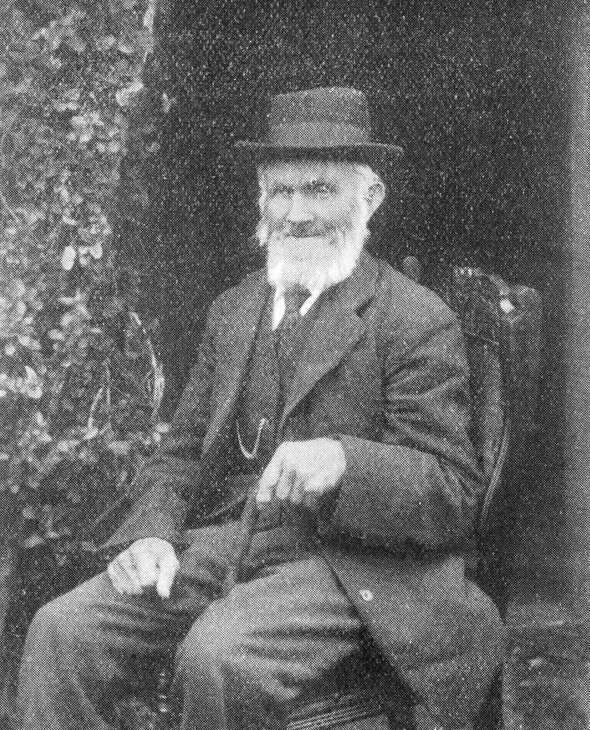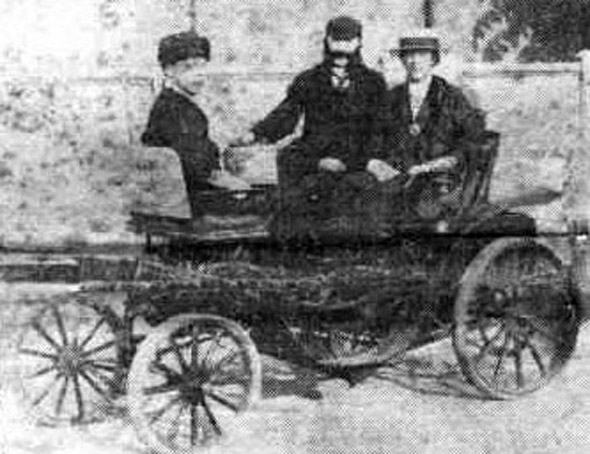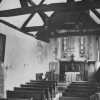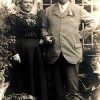Standing in the churchyard of St. Andrew’s Parish Church at Fontmell Magna is the memorial erected for Lieutenant Philip Salkeld V.C., who died on 10th of October 1857 at Delhi. Philip Salkeld was born and brought up in Fontmell Magna where his father the Revd. Robert Salkeld was Rector.
Philip Salkeld’s military career started when he entered Addiscombe College in 1846. While he was there he was selected, by competition, for an engineer appointment, attaining the top position in mathematics and modern languages. He achieved the rank of 2nd Lieutenant on the 9th of June 1848. The next two years he spent studying the theoretical and practical side of fortification and engineering at the Royal Engineer establishment at Chatham.
His service records show he was ordered to travel overland to India and he arrived in Calcutta in June of 1850, where he joined the Corp of Sappers and Miners, Bengal Establishment. He quickly acquired an excellent knowledge of Hindustani. In June 1853 he was sent to Meerut as the extra engineer. Later that year he was appointed officer in charge of the Grand Truck Road, a position he held until December 1856. His promotion to the rank of Lieutenant came on 1st of August 1854.
During his service in India Philip was mindful of events at home and he was able to save enough money to send home £100 a year to be used towards the cost of education for his younger brother Charles, in preparation for him to follow Philip to Addiscombe College. On the 10th May 1857 at the outbreak of the Meerut mutiny Philip Salkeld was still stationed in Delhi; he escaped from the city and the massacre but his possessions were lost, including his money which was in a Delhi bank.
He joined Major General Sir Harry Barnard’s column and was recognised as a brave officer. A decision was taken on the night of 13th September 1857 to launch an assault on the Cashmere and Water Bastions at dawn the following day. Colonel G Campbell was commanding the 3rd column consisting of the 32nd Regiment of Foot; 2nd Bengal Fusiliers and 1st Punjab Regiment. They were to attack the Kashmir Gate after it had been blown open.
Three Engineer Officers were attached to the column: Lieutenants Home, Salkeld and Tandy. According to the account of the attack, the column fell in and marched to their respective places. The plan was for the 1st column to storm the breach near the Cashmere bastions, while the 2nd column was to storm the Water bastion. As the exploration party for the 3rd column advanced to the gateway in broad daylight they came under musket fire from above the gateway and from both flanks as they laid and adjusted the powder bags. Lieutenant Salkeld had been shot and had fallen into a ditch. Sergeant Carmichael tried to fire the charge, but was shot dead. Sergeant Burgess successfully fired the charge but was shot dead. In the confusion Sergeant Smith, thinking that Burgess had failed to fire the charge, ran forward and seeing the charge was alight he threw himself into the ditch.
In his account Sergeant John Smith says the Sappers going to the gate were led by Lieutenant Home and Bugler Robert Hawthorne; following a few paces behind, led by Lieutenant Salkeld, came the party carrying the powder; Sergeant Smith bringing up the rear to see none of them remained behind. Four of the Indians in the party refused to go on and Sergeant Smith threatened to shoot them. Lieutenant Salkeld came to see what was happening and said to leave them as they had enough powder. Sergeant Smith says he went on but only Lieutenant Salkeld and Burgess were there. Lieutenant Carmichael was dead, Sergeant Smith at great risk retrieved Carmichael’s bag of powder, set the fuse and reported “all ready” to Lieutenant Salkeld who, stooping down to light the fuse, put one of his feet out and was shot through the thigh; he told Sergeant Smith to fire the charge, but it seems Burgess had already done it.
Sergeant Smith says in his account that: “…as soon as the dust had cleared away we saw Lieutenant Salkeld and Burgess covered with dust their laying in the middle of the ditch having saved them from falling debris…I went to Lieutenant Salkeld and called the bugler to help me remove him under the bridge as the fire had covered upon us, and Lieutenant Salkeld’s arms were broken…LieutenantSalkeld would not let us remove him so I put a bag of powder under his head for a pillow, and bound up his arms and thigh and I left the bugler to look after him and went to Burgess…I got some brandy from Lieutenant Home and gave to both...” Sergeant Smith then went to the rear and obtained two stretchers and with the help of Bugler Hawthorne got Lieutenant Salkeld onto one of the stretchers and had him removed to the hospital.
The gallantry displayed that day by Lieutenant Duncan Charles Home; Lieutenant Philip Salkeld (both of the Bengal Engineers); Sergeant John Smith of the Bengal Sappers and Miners and Bugler Robert Hawthorne of the 52nd Regiment, earned them all the Victoria Cross.
Lieutenant Salkeld was mortally wounded. He survived until 10th of October 1857, when he died of his injuries. One report says that one arm had been amputated. The award of the Victoria Cross was given by Major General Sir Archdale Wilson, who had his Aide-de-Camp, Lieutenant Turnbull, pin the ribbon of the VC upon Philip Salkeld in the hope that it might invigorate his spirits but he said only “…it will be gratifying to send it home…” Philip Salkeld was buried in the cemetery at Delhi and his death was recorded on the War Memorial there.
Philp Salkeld’s brothers, Richard Henry and Charles Edward, both served in the Indian Army.





